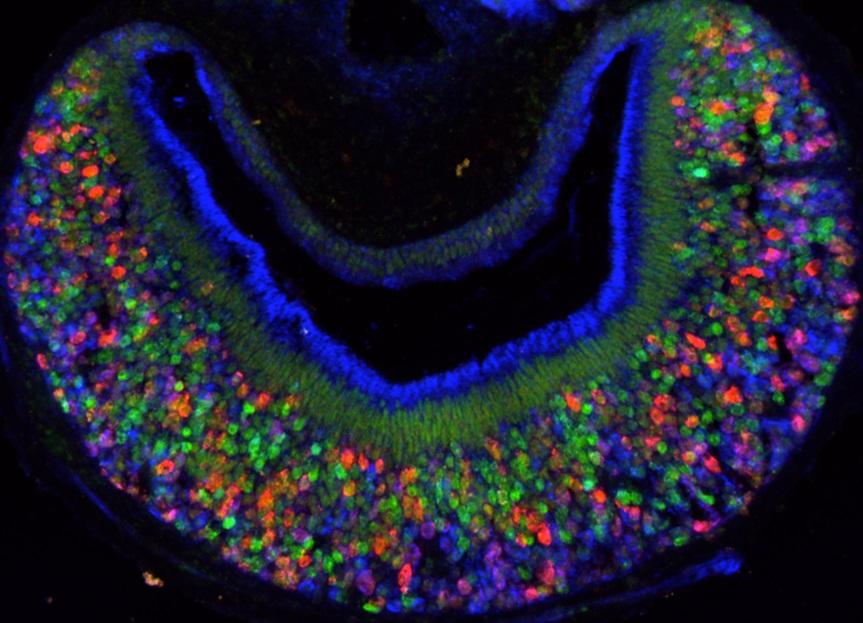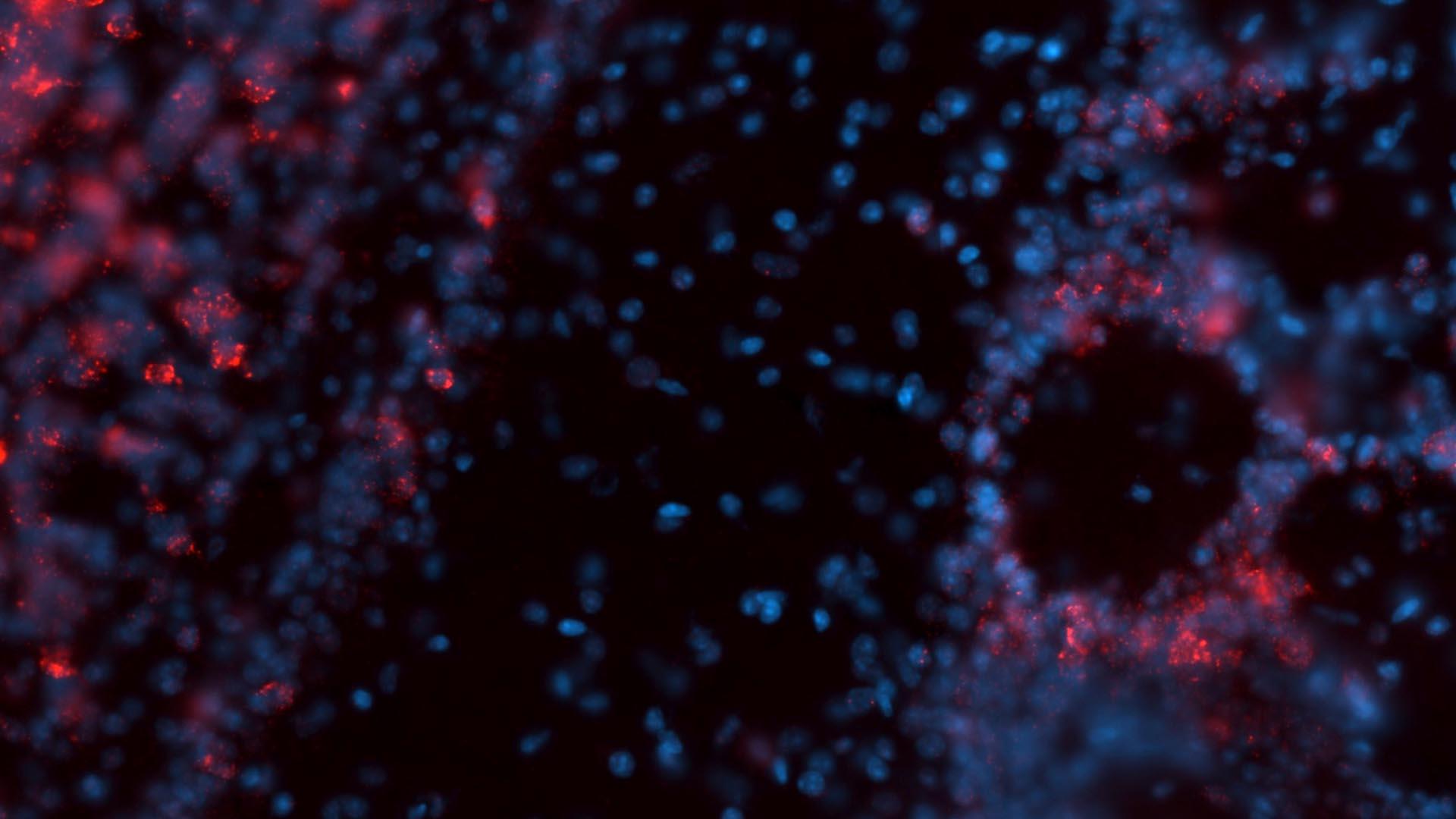
Isogai Lab (2016-2023)
The Isogai Lab, established at the Sainsbury Wellcome Centre in 2016, focused on studying social behaviours of rodents such as mating, territorial aggression, and parental behaviours. Previously Group Leader at SWC, Dr Yoh Isogai is now a Senior Scientist at the Allen Institute for Neural Dynamics.
The goal of the Isogai lab was to understand the relationships between genes, molecules and circuits in the execution and control of complex, natural behaviours.
A fascinating question in biology is how genes orchestrate not only the body plan but also complex physiological responses to the environment and experience. Neural circuits underlying innate behaviours provide a remarkable example in which genes determine specific neuronal connections to organise behaviours essential for the survival of individuals and species. Furthermore, gene regulation is one of the fundamental modes by which animals’ experiences and internal states modify neural computation.
Notably, neural circuits underlying mating, territorial aggression, social hierarchy, and parental behaviours are hardwired yet highly flexible, dependent on developmental stage, gender, hormonal state, and prior experience. The goal of the Isogai lab is to comprehensively identify both genetically pre-programmed and experience-dependent elements of social behaviour circuits, at physiological, behavioural and molecular genetic levels. We thereby aim to learn general principles on constructing and operating biological circuits compatible with the social life of animals.
Research Topics
1) Pheromone circuit - a model system to study the recognition of social cues
What are social cues? How do these stimuli determine specific social actions? Classical studies by ethologists point to a general rule, in which animals use a rather simple set of discrete stimuli to trigger complex social behaviours such as aggression and mating. In fact, rodents use special scents known as pheromones as signals carrying information such as species, sex, and social status. Our research takes advantage of a large collection of pheromonal compounds – those identified by pioneers of this field as well as ones newly identified by us – to understand how information carried by single or multiple monomolecular pheromones is processed and in turn yields specific social behaviours.
We combine in vivo physiology with molecular methods such as single-cell transcriptomics and genomics to define the functions of specific neurons in social circuits. Our research so far has defined specific social cues, both olfactory and non-olfactory, and corresponding neural pathways for specific controls of pup-directed behaviours as well as predator defence (Isogai et al. 2011; Isogai et al. 2018 in revision). Our current emphasis is to identify neuronal nodes in which “quantal” social information (both pheromonal and non-pheromonal cues) is integrated and reconstituted to represent a social being as a whole.
Importantly, the recognition of social cues is profoundly affected in human disorders of social behaviours, and our studies will shed light on the molecular and circuit basis of social recognition.

Pheromones are detected by chemosensory organs. For example, in the rodent vomeronasal organ, an accessory olfactory organ shown in this image, a diversity of chemosensory neurons ensures the detection of a rich repertoire of social and environmental information. Each colour marks unique chemosensory receptor RNAs expressed in these cells.
2) Molecular control of social behaviours – genomic blueprint of innate, hardwired circuits
In principle, both hardwired and experience-dependent programmes of innate behaviours are written in the genome. A fundamental challenge, however, is to decipher information encoded within the DNA relevant to the construction and operation of the circuits. This effort is critical, given that molecules expressed in each neuron, which are governed by space, time and quantity, largely determine the functional properties, for example, biophysical and connectivity, of the neurons. Moreover, the actions of neuromodulators and molecular changes that occur within synapses and cell nuclei can “reprogramme” existing neural circuits.
The lab’s goal is therefore to firmly link the molecular compositions (i.e., transcriptome) of neurons that comprise social circuits with their neuronal properties and roles in behaviours. To quantitatively probe gene expression in a heterogeneous tissue such as the brain, we use advanced imaging such as single molecule, cleared tissue, and/or live microscopy, which allow us to study biochemical events in situ in a high-throughput manner (Isogai et al. 2007; Menegas et al. 2015; Isogai et al. 2016). We then aim to define regulatory elements in the genome for the specification of functional cell types and the modulation by external and internal inputs. In combination, these approaches will allow us to obtain a detailed genetic blueprint for neural circuits underlying social behaviours.

Neurons are constantly updating their compositions upon external and internal inputs. Shown is the induction of activity dependent gene c-fos (in red) in the olfactory bulb. Blue marks cell nucleus.
Selected Publications
A transcriptomic axis predicts state modulation of cortical interneurons
Bugeon S, Duffield J, Dipoppa M, Ritoux A, Prankerd I, Nicoloutsopoulos D, Orme D, Shinn M, Peng H, Forrest H, Viduolyte A, Bai Reddy C, Isogai Y, Carandini M, Harris KD
Nature (607: 330-338) (doi: 10.1038/s41586-022-04915-7)
06 July 2022
Parenting as a model for behavioural switches
Bailey S, Isogai Y
Current Opinion in Neurobiology (73: 102543) (doi: 10.1016/j.conb.2022.102543)
25 April 2022
Single-cell molecular and developmental perspectives of sexually dimorphic circuits underlying innate social behaviors
Serrano-Saiz E, Isogai Y
Current Opinion in Neurobiology (68: 159-166) (doi: 10.1016/j.conb.2021.03.010)
27 April 2021
Multisensory Logic of Infant-Directed Aggression by Males
Isogai Y, Wu Z, Love MI, Ahn MH, Bambah-Mukku D, Hua V, Farrell K, Dulac C
Cell (175(7): 1827-1841) (doi: 10.1016/j.cell.2018.11.032)
13 December 2018
Optimized protocol for imaging cleared neural issues using light microscopy
Isogai Y, Richardson D, Dulac C, Bergan JF
Methods in Molecular Biology (1538: 137-153) (doi: 10.1007/978-1-4939-6688-2_11)
11 December 2016
Dopamine neurons projecting to the posterior striatum form an anatomically distinct subclass
Menegas W, Bergan JF, Ogawa SK, Isogai Y, Venkataraju KU, Osten P, Uchida N, Watabe-Uchida M
eLife (4: e10032) (doi: 10.7554/eLife.10032)
30 August 2015
Molecular organization of vomeronasal chemoreception
Isogai Y, Si S, Tan T, Pont-Lezica L, Kapoor V, Murthy V, Dulac C
Nature (478: 241-5) (doi: 10.1038/nature10437)
21 September 2011
Transcription of histone gene cluster by differential core-promoter factors
Isogai Y, Keles S, Prestel M, Hochheimer A, Tjian R
Genes & Development (21: 2936-49) (doi: 10.1101/gad.1608807)
15 November 2007
Coactivator crosstalk specifies transcriptional output
Marr MT, Isogai Y, Wright KJ, Tjian R
Genes & Development (20: 1458-69) (doi: 10.1101/gad.1418806)
20 March 2006